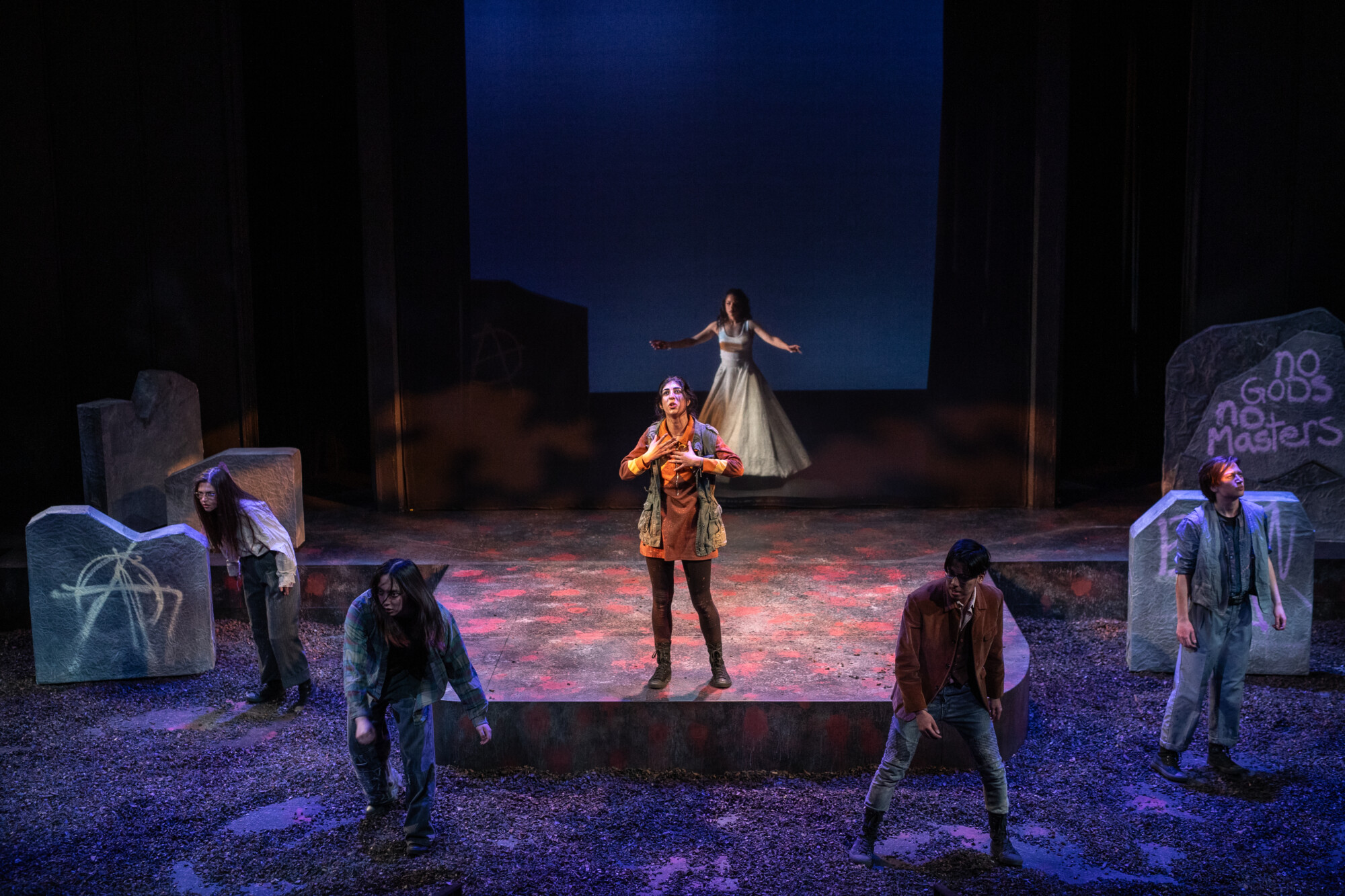The original play Immolation was performed in the University of Waterloo’s Theatre of the Arts from Mar. 20-23. Immolation The original play was directed by Pam Patel and covered a variety of topics related to revolution and what that might look like.
“The show deals with a lot of heavy topics,” Emily Zandbergen, the stage manager, said.
“So, we kind of use the ‘join the fight’ phrase as an open-ended call to action. I think people will get a lot of different things out of it based on who they are and their personal experiences, and what ‘join the fight’ means to them is going to be different,” she said.
Before entering the theatre, there was an interactive experience. Paper silhouettes of the cast and crew members were taped to the wall and audience members were encouraged to write what they fight for, with trans liberation, queer joy, free Palestine, and women in leadership being some of the fights. There were also sayings like “One must not remain silent,”, “Tomorrow is now,”, “Can you hear me now?” and “I fight for solutions.”
“At the University of Waterloo in the Theatre and Performance Department, we always have, what we call t’he ‘engagement space’ ahead of time because we like to bring audiences in early to have an opportunity to engage with the show before entering into it.”
Immolation was developed by the director, but also by the actors and co-creators. The characters they became were inspired, in part, by the actors’ own experiences. For example, the scene regarding about transgender characters was developed by transgender actors. These types of stories are not shown on stage very often, and what they created was a beautiful and personal visual representation of their actors’ own experiences and thoughts.
Much of the play was developed through improvising using various amounts of speech speaking and interactions between actors. Some of the silent improvisation is in the final show, with minutes going by with no speaking, but the story is being shown so clearly through movement. No words are needed.
“One of my theatre directors said that ‘theatre is fleeting,’” Sarah, an audience member, said. “Immolation speaks to this saying even more because it most likely won’t be shown again. It’s original work developed by these actors, and it is beautiful to witness the art no matter how momentary and fleeting it is.”
The visuals of the piece were very powerful. One scene in particular beginsstarts with a martyrized character, a martyr, being hung next to another previously hung martyr at the back of the stage. At the front of the stage, a family has a picnic in the park on a peaceful Sunday afternoon. Another character enters protesting the use of oil and proceeds to be, gets dragged off stage by invisible hands to be, and is hung alongside the other two.
“It’s a striking image. On beautiful peaceful days, there are still fights to be fought and people dying for those causes. Not that we can’t have a moment to ourselves, but the fight continues even if we don’t feel the effects. War doesn’t stop on sunny days. Climate change doesn’t pause for a rainbow,” Sarah said.
The dedication of the crew was evident in all the details. The set design was reminiscent of war and ruin with red paint splattered on the stage, and large boulders and rubble lining the stage.
“I’ve never seen rubble used in a play like that. It moved all over the place when then actors moves, it added weight to their movements in a way I’d never seen before,” Sarah said. “I also noticed that sometimes it was used to symbolize character’s taking the leap from the ‘safety’ of the stage into activism and into the fight.”
The show was packed with emotion and the overwhelming need to create a better world. Tomorrow is now. It’s time to join the fight.




Leave a Reply